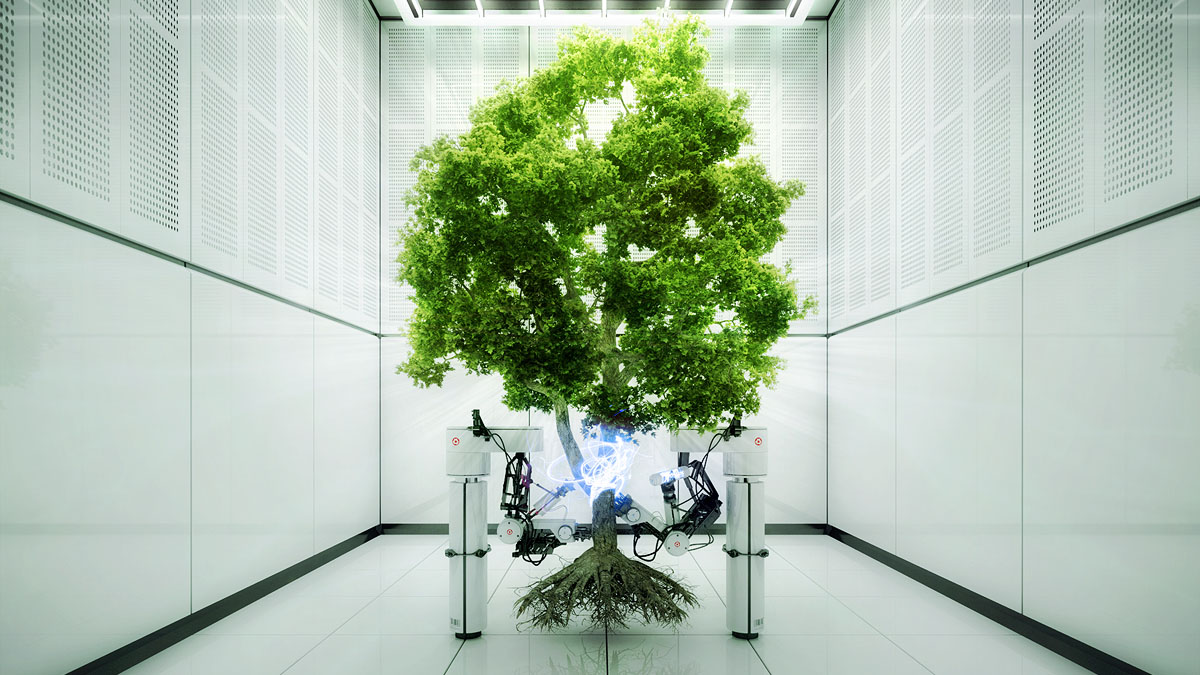craig venter’s giant leap for biology

Here’s something those of you with billions of dollars and a team of experts in cellular and molecular biology on speed dial can try at home. Take the cell of a dead microorganism and a breakdown of another bacteria’s genome. Then, have your DNA assembling machine string together about a million nucleobases with several markers that let you track the resulting strand. Of course you won’t be able to just put together one strand, but instead, you’ll get segments about a thousand nucleobases long. Once that’s done, use some key enzymes and yeast cells to assemble them into a complete chromosome. With your artificial chromosome done, very carefully place it inside the dead cell you had laying around and give the whole thing a quick zap. You should now have a reanimated bacterium with a working, artificially assembled chromosome from another species, regulating the cell’s functions as if it’s always been there, even accumulating a few mutations along the way.
By the way, none of this is purely conceptual. It’s exactly what biologist Craig Venter and his team managed to create after roughly a decade and a half of painstaking work. This experiment shows us that not only is life an intricate biochemical reaction as we’ve suspected before, but that we understand enough about it to splice a genome and a cell into a working organism. Just like particle physicists who smash atoms to track down if a predicted particle really does exist and whether it behaves according to their equations, Venter’s team did an experiment which proved that what we know about cellular biology and genetics is as solid as most scientific theories can get. Of course there’s more to uncover and as the technology ramps up to work with bigger and more complex genomes, we’ll be in a better position to keep learning. It’s also important to note that this isn’t exactly the kind of playing God stuff which has been circulating in the media. Venter didn’t create new life, or a previously unknown organism. His team accurately replicated a genome and reanimated a dead cell using it, adding just a few watermarks to check the quality of their final assembly. It’s not the kind of synthetic biology that DARPA is interested in developing. At least not yet.
As pointed out by PZ, artificial bacteria which will eventually be designed to do very specialized things, like say metabolizing raw petroleum from oil spills, couldn’t last long in the wild and would be very easily outcompeted by generalists with billions of years of evolution behind them. In fact, synthetic life would actually be fragile and most probably kept that way. The current state of the art, million nucleobase synthetic genome is also simple as far as most living things on this planet are concerned, and while the media brings up terrorism and military lab monsters in the finest traditions of comic book science as reporters cover the story, the level of expertise involved in creating synthetic organisms makes assembling a functioning thermonuclear warhead look easy, even if we’re talking about future laboratory setups. One day, we may be able to breed truly amazing things in top secret laboratories, but that day is still a long ways away and the technology required is still closer to what we see in science fiction movies than anything we’ll actually have anytime soon. Nevertheless, we now know it’s possible and have a good deal of the required tools to make it happen. That fact alone is truly impressive, so much so, that Jerry Coyne referred to this feat as biology’s equivalent of landing humans on the Moon and as an interested observer, I find myself agreeing with this assessment.
See: Gibson, D., et al. (2010). Creation of a Bacterial Cell Controlled by a Chemically Synthesized Genome Science DOI: 10.1126/science.1190719





